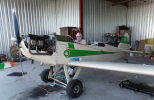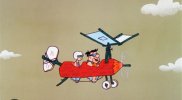- Joined
- Jul 17, 2019
- Messages
- 1,726
- Location
- Chicago suburbs
- Display Name
Display name:
The Little Arrow That Could
When it comes to EAB aircraft are there any prevailing thoughts/wisdom in the community about manufacturers or models that are easier to work on than others? Not necessarily the ease of building the kit from scratch, but in terms of ongoing mx.
Specifically for the things you might do in normal operation like upgrade a component in your avionics stack, replace a radio, changing a tire, servicing a strut, replace a hydraulic gear pump, ... Not things like body work / fixing it after a gear up or something like that.
Most curious about the faster EAB makes, like Lancair vs Glasair (RGs, not their tail draggers) vs Vans vs Velocity... Are there any that are notably more difficult to work on?
NOTE: Asking as someone who hasn't turned a wrench on their airplane for anything more difficult than unscrewing an oil filter, so if the question doesn't make sense... that's why
Specifically for the things you might do in normal operation like upgrade a component in your avionics stack, replace a radio, changing a tire, servicing a strut, replace a hydraulic gear pump, ... Not things like body work / fixing it after a gear up or something like that.
Most curious about the faster EAB makes, like Lancair vs Glasair (RGs, not their tail draggers) vs Vans vs Velocity... Are there any that are notably more difficult to work on?
NOTE: Asking as someone who hasn't turned a wrench on their airplane for anything more difficult than unscrewing an oil filter, so if the question doesn't make sense... that's why


